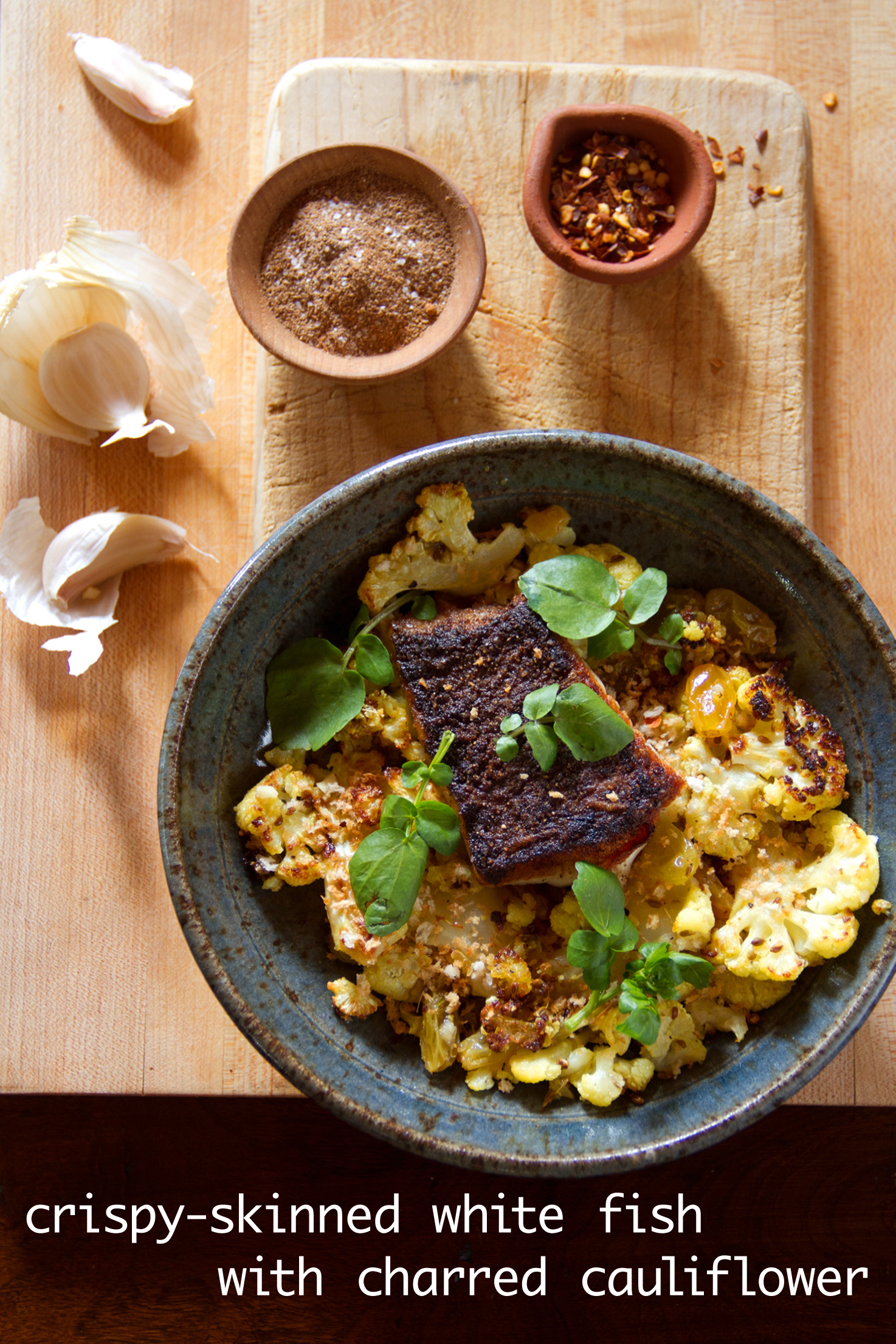
Look up. You’ll see crispy-skinned fish and blistered cauliflower. I do like my char and I spend a lot of time on this blog cooking with high heat. Mastering a controlled char on all sorts of food is the sign of a good cook. I’m not alone in thinking this, Food52 wisely lists competent use of high heat as number 23 in their list of “30 Qualities of a Good Home Cook”. Daniel Boulud writes “The Chef’s job [is] to employ heat to transform ingredients… Whether it is extracting and reabsorbing juice in roasting, or braising and reducing, or sautéeing then caramelizing – you are working the moisture in the food you are preparing, and then concentrating it… This is the transformational aspect of cuisine.”
A great place to start a master class on cooking with high heat comes in learning to pan-fry fish that’s not steamed but actually seared. Crispy-skinned fish cooked in a blazing hot pan that won’t stick, rip, or fall apart is definitely a skill all home cooks should learn.
How to Cook Crispy-Skinned Fish That Won’t Stick to the Pan
- It vital you start with dry fish. Blotting both sides with clean paper towels is a good place to start. But blotting alone is not enough. Afterward, return the uncovered (and unseasoned) fillets to the refrigerator for at least one hour.
- When ready to cook heat a large, dry, cast-iron, or heavy-bottomed non-stick skillet until it’s blazing hot. Notice I said dry. Don’t add oil until after the pan gets very hot.
- Once heated carefully add oil and swirl it around the skillet. Once coated dump out most of the oil and return the pan to the heat. Don’t worry too much about the oil, all you need is the barest slick across the entire surface of the skillet.
- If you plan on seasoning the fish, the time to do it is just before it hits the pan. Once seasoned place the fish, skin side down, into the hot skillet. It should sizzle. You may also notice that it might want to curl up at the edges (depending on thickness). If this happens apply gentle, even pressure to the fillet with a spatula until it relaxes and lies flat. Resist the temptation to move the fillet around the skillet or peek at the underside. Cook, continuing to apply light pressure with a spatula as needed, until the flesh is nearly opaque and cooked through, with just a small raw area on top (though salmon is an exception and should get flipped when cooked halfway through). At this time the skin should have released itself from the skillet.
- Flip the fish, remove the skillet from the heat, and let it finish cooking about 1 more minute.
- Lastly, don’t crowd the skillet. Work in batches if necessary.
To get you inspired today I’ve included a crispy-skinned fish recipe that features charred cauliflower. I’ll admit when cooked together this Seared White Fish with Crispy Skin and Charred Cauliflower recipe is a rather complex ordeal. So if you’re goal is to perfect a crispy-skinned fish that doesn’t stick to the pan you don’t have to include the cauliflower in your efforts. That would involve juggling a lot of pans at one time. GREG
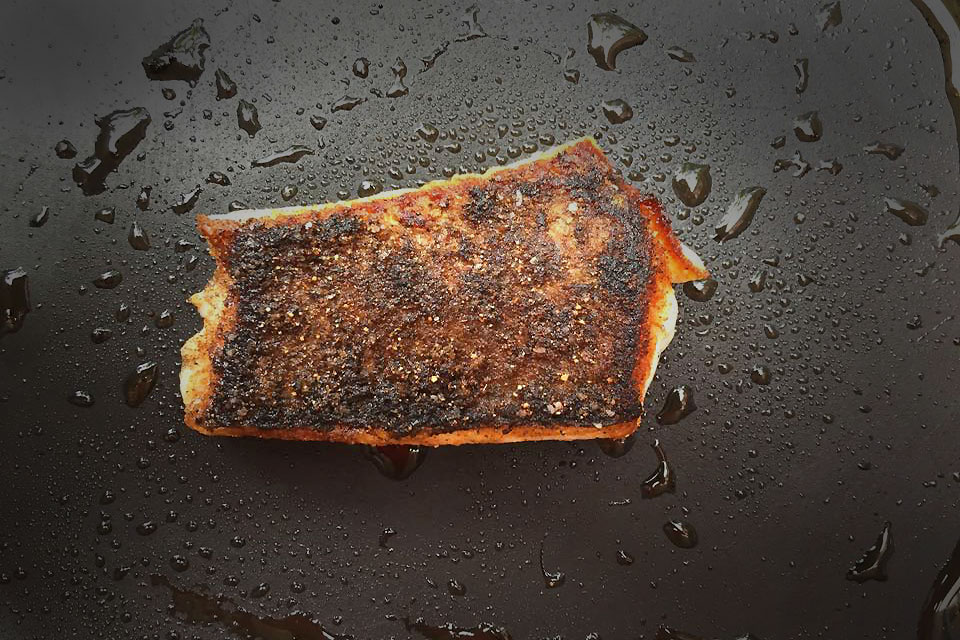
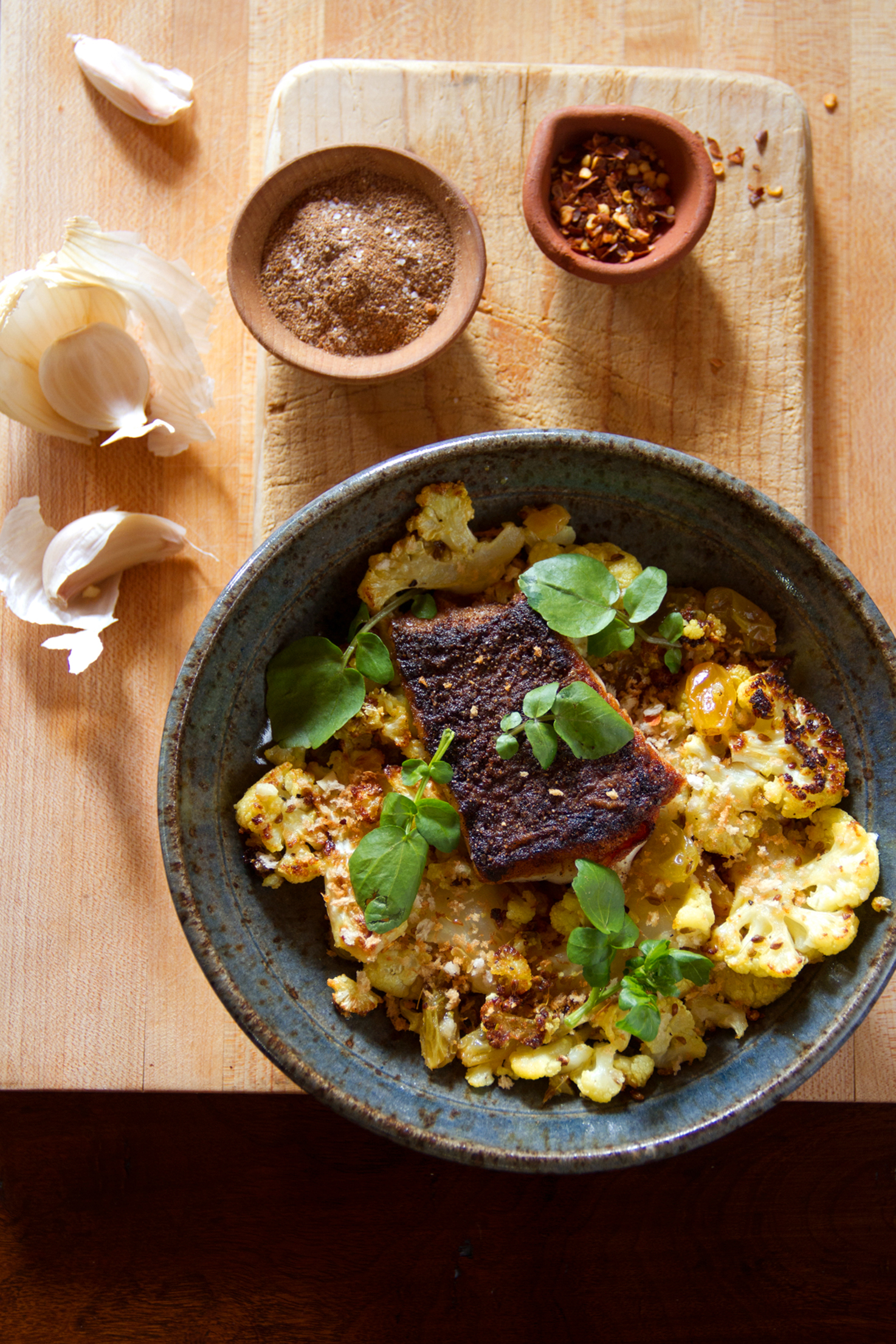

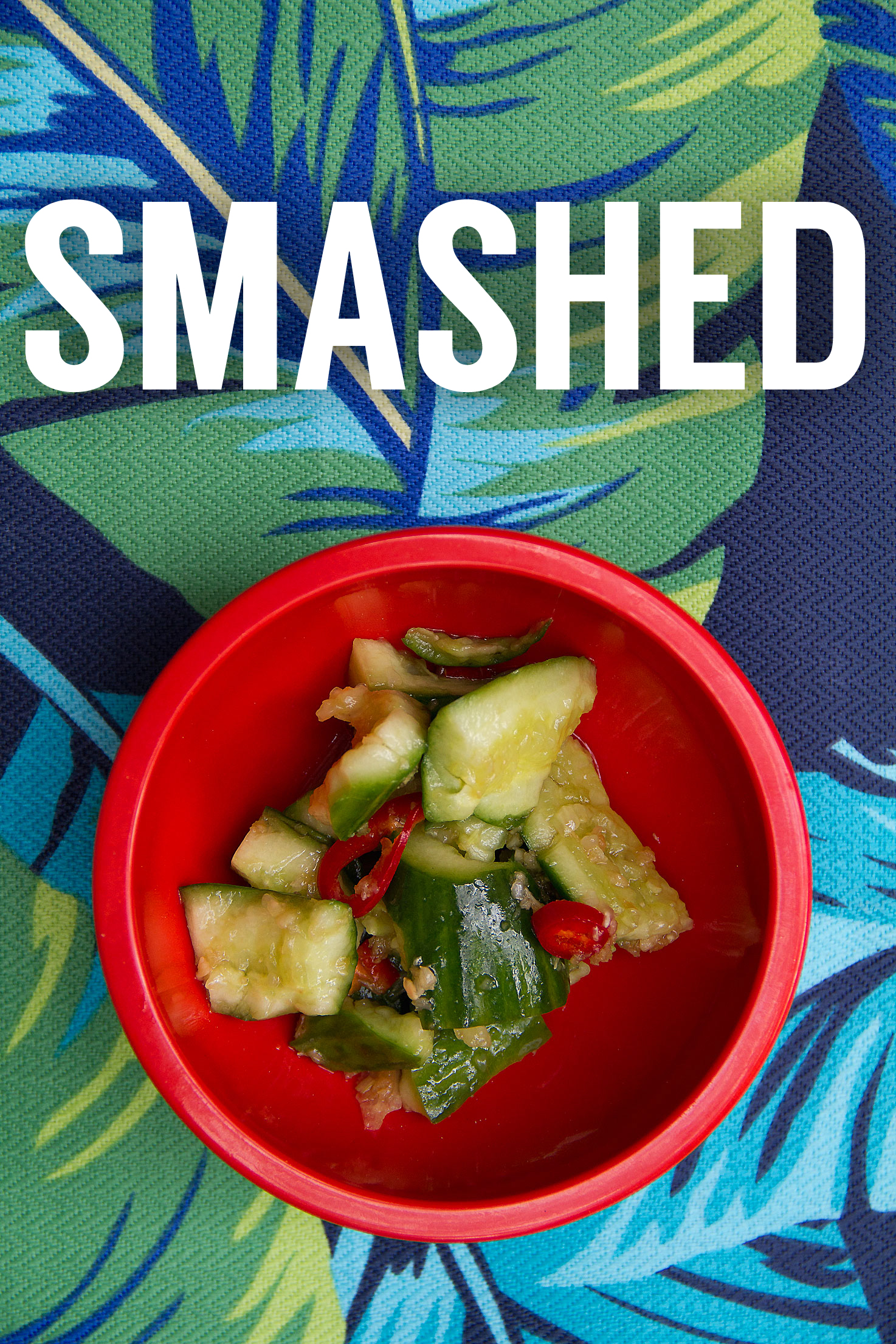
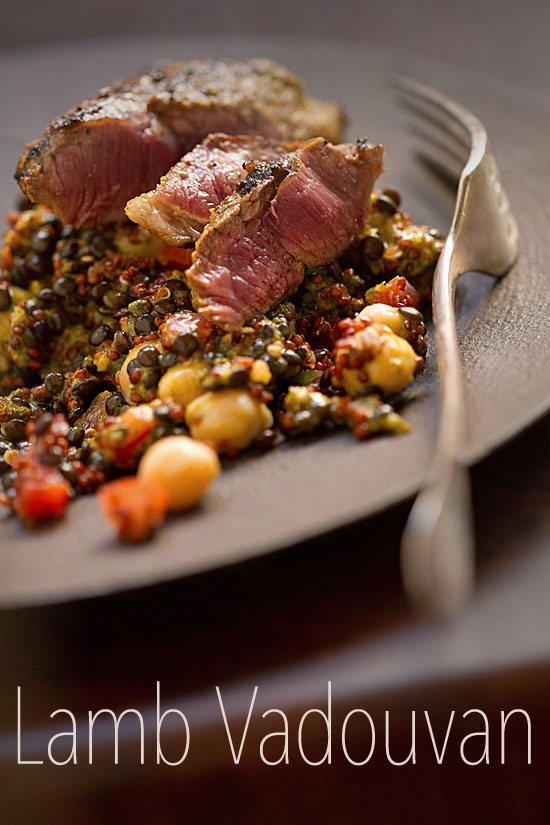
I was going to say that I dated a crispy-skinned fish in high school, but then I decided against it. I really love this post! I don’t make enough fish. I would love to make more and I would love to be able to do it like this, so thank you very much.
What an exotic blend of flavors. Thanks for the great tips on cooking crispy skinned fish.
So impressed by your char when I saw it on Instagram. Mark won’t allow me to sear fish indoors„, he is so mean.
Thanks for an another great post, I will try my luck with the fish and the cauliflower. It makes sense to return the fish to the fridge to dry, I do that with poultry.
My goodness — look at that gorgeous char! I was thinking that before I started reading. Outstanding fish and lovely cauliflower recipe too. Have a great weekend Greg.
Beautiful! And the cauliflower sounds incredible!!!
That is some gorgeous crispy skin you have there. I’ve yet to try this with white fish, but I always cook salmon this way. Such a treat.